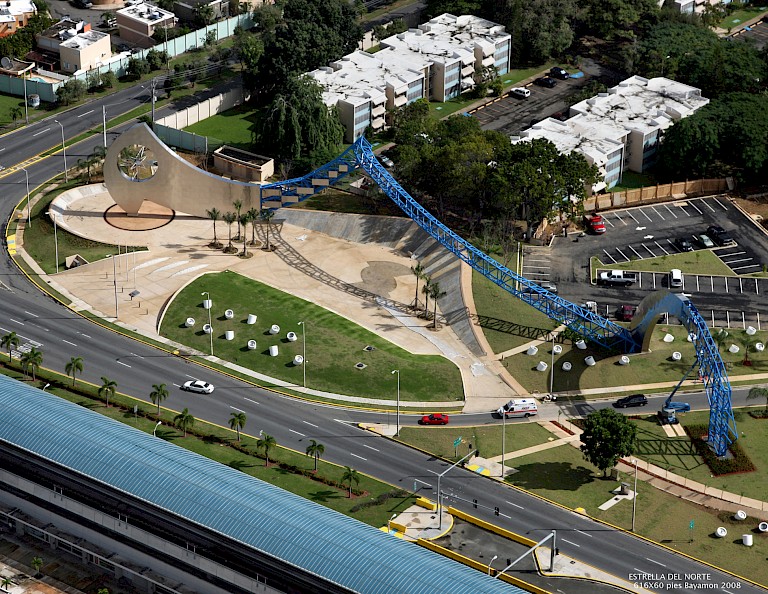



The result is Estrella del Norte Park. Inspired by universal shapes, the park is comprised of several circular shapes, including a curved wall. A solar-powered lighting feature marks the location of 400 stars with the North Star (Estrella del Norte) at the center. A large stage and permanent seating provides a performance space, and the design includes a new restaurant.
Rubio’s contribution is a monumental sculpture that spans the entire park with its 616-foot length. A section of the sculpture includes a three-dimensional, 25-foot-tall star that both rotates and is lit by solar-powered lights. The sculpture is part of Rubio’s broader artistic agenda to encourage those who interact with his work to “get in touch, in one way or another, with our own being and the position we occupy in our environment in relation to space, time, and light.”
Instead of drug users, the new park attracts a broad segment of Bayamón’s population. “Designing for barren and idle spaces is one of my interests because we can appropriate and repurpose the space for a better socio-cultural urban use,” he says. “Today, Estrella Del Norte is a cultural space.” The variety of programing includes concerts, art festivals, arts workshops—and open, recreational space. Puerto Rico lacks similar spaces, he says, so the park draws from surrounding areas in the metro, especially since its location is directly across from a main mass transit stop.
As a “socio-cultural icon,” the piece has all the marks of success—it is a distinctive, contemporary artwork that is as recognizable as any good “logo” public artwork. Publicity and urban branding has begun the process of associating the city and its revitalization dreams with the aspirational new sculpture.
One feature that sets Estrella Del Norte apart from similar large-scale transformative placemaking projects is Rubio’s very practical commitment to social justice. As part of the project, he created Art for Inmates, a rehabilitation program that brought prisoners into the community. “They worked and interacted in harmony with the civil population,” says Rubio. “Many of them obtained pardons for their excellent behavior and achievements.”
All copyright belongs to Shanghai Academy of Fine Arts, Shanghai University.



